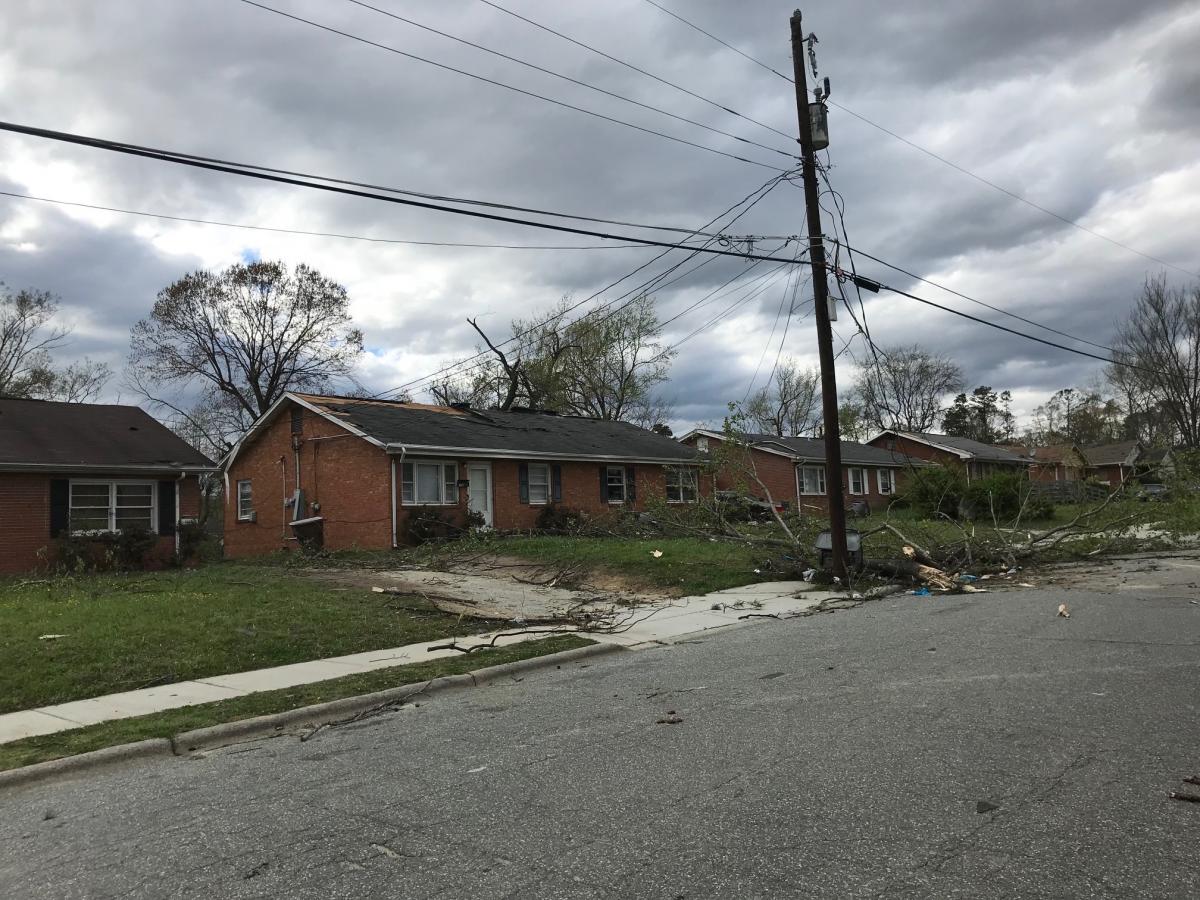On Tuesday, President Donald Trump approved Gov. Roy Cooper's request for a federal disaster declaration to help tornado victims in Guilford and Rockingham counties. The declaration allows people recovering from the April 15th storm to apply for low-interest federal loans or grants to help them repair their homes and businesses.
In Greensboro, where the bulk of the damage occurred, one person died, roughly 1,000 buildings were affected, and thousands were left without power.
Guilford County Emergency Services Director Don Campbell spoke with WFDD's David Ford to bring him up to speed on the recovery.
Interview Highlights
What have been the biggest challenges to recovery efforts in Guilford County thus far?
The biggest challenge that we had initially was just identifying the extent of the damage from where it went—basically across 16 miles in Guilford County—and trying to identify where the worst damages were. And most importantly to make sure that we have the people identified, and that any injuries or people trapped were taken care of.
From there, our biggest challenge after that was making sure that those individuals that did not have homes found a place to stay in our disaster shelter that was opened by the Red Cross and social services. And then really helping to coordinate all of the nonprofit agencies who very quickly started to fill the gaps [for] the individuals who had needs from the tornado impact the night before.

What is the situation on the ground today, and how exactly does this new federal assistance come into play?
Our focus right now is making sure that—now that we have received a presidential disaster declaration for individual assistance—is [to] support the federal government and the state government to be able to get in here as soon as they can, to be able to start assisting the disaster survivors in applying for those federal benefits so they can start the process of the long-term part of recovery, of rebuilding and restoring their homes to pre-disaster condition.
Typically, what we recommend is that individuals initially start to work with their insurance companies right off the bat to be able to take care of any of the insured losses that they've incurred. And that can normally happen pretty quickly through most of the insurance agencies. From there that's where the state and federal benefits really start to step in to where you either have uninsured or underinsured losses. Individuals can then start to apply to the federal government for this event to be able to start to bridge that gap between what insurance provided and what their needs are to recover from a disaster.
What contributed most to the low death toll?
I think we attribute it to a couple different things. One, the storm happened late in the afternoon while it was still light outside. So, individuals could really see the changing clouds and how dark it got so quickly that they were able to take cover.
We had a number of warning systems that went off. Both our community notification system and many of our media agencies had been pushing information out, as well as many of our public safety agencies had been putting out information for a day or two letting people know that there was the possibility of severe weather that afternoon. And so, a combination of all of those things I think really gave us the ability to make sure people were aware that the storm was coming.
300x250 Ad
300x250 Ad
